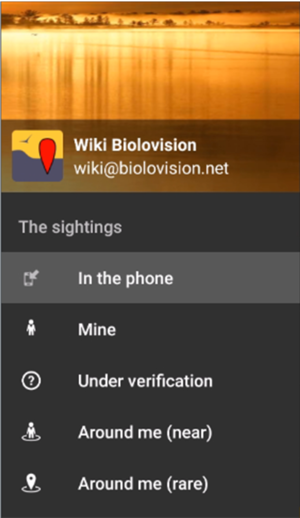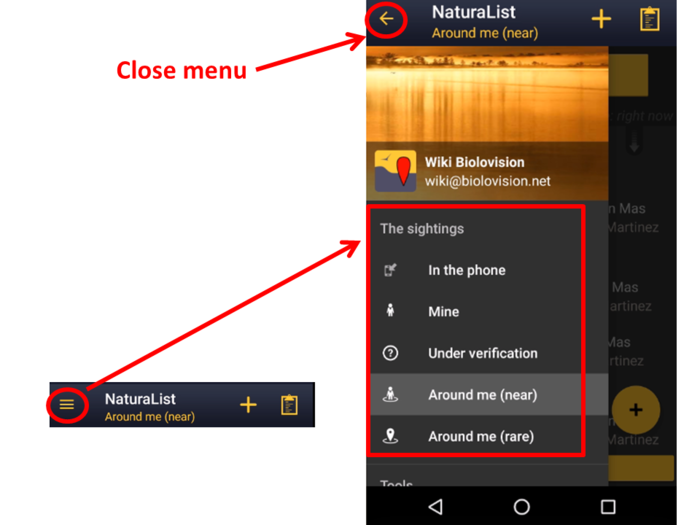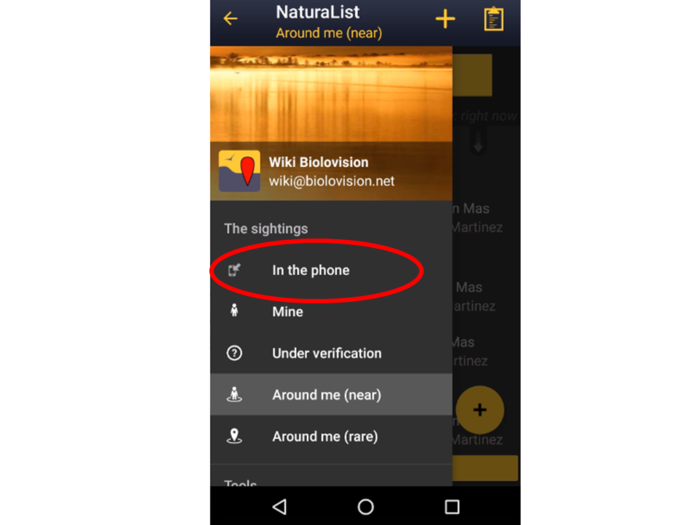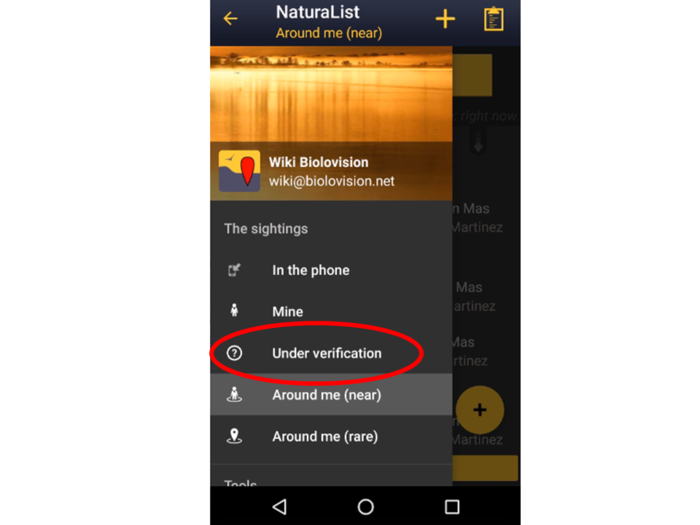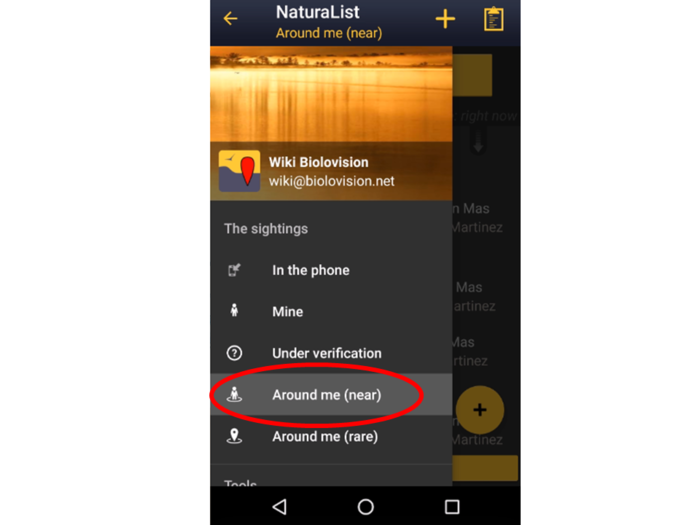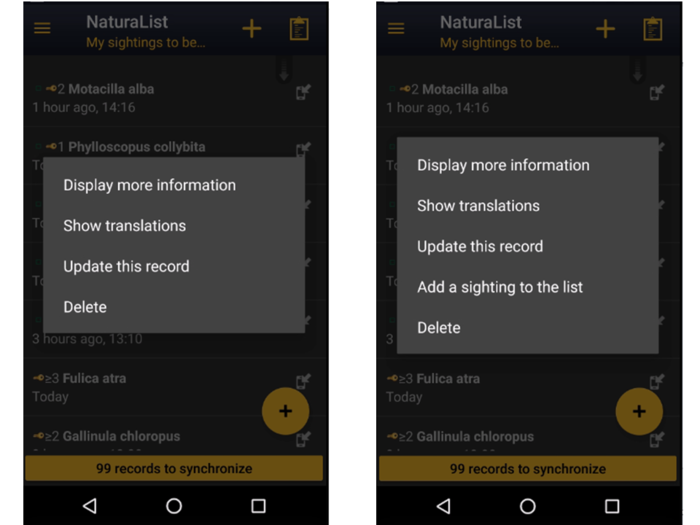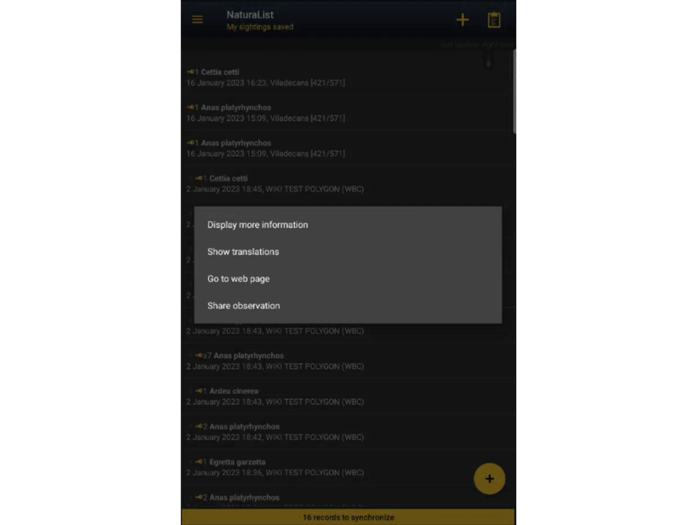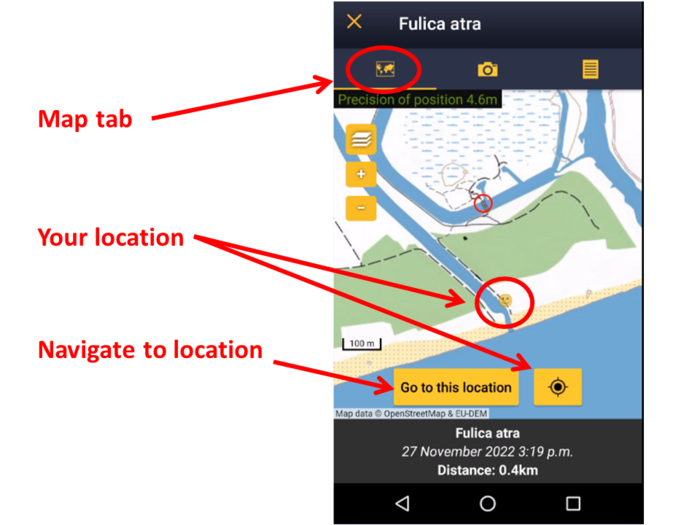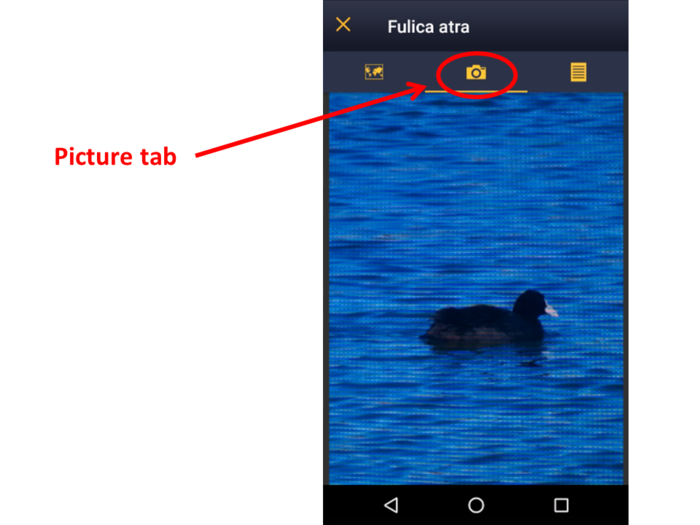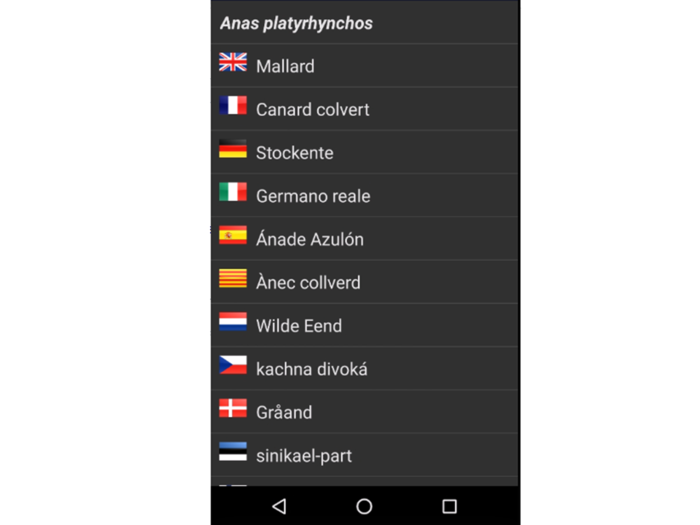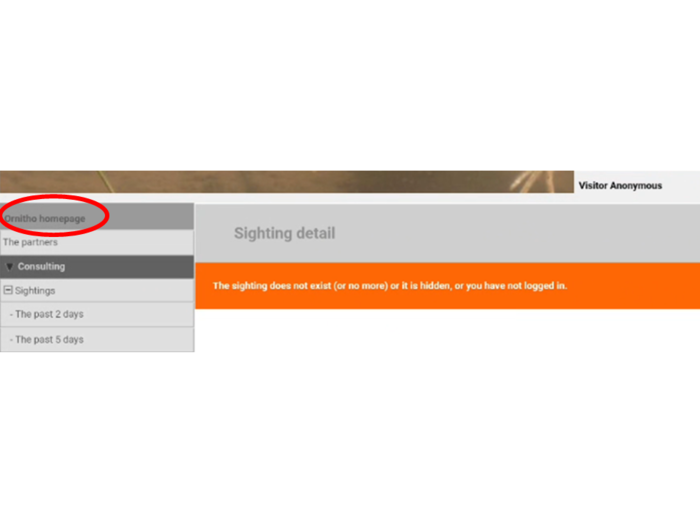Search observations: Difference between revisions
No edit summary |
|||
| Line 120: | Line 120: | ||
<center> | <center> | ||
< | <div class="toc" style="border-radius: 5px; padding: 25px; text-align: left; font-family: sans-serif; color: black; width: 600px; background-color: hsl(0, 77%, 78%)"> | ||
<!-- GREEN BOX (Tips): hsl(157, 74%, 80%) | <!-- GREEN BOX (Tips): hsl(157, 74%, 80%) | ||
YELLOW BOX (Summaries): #ffffdb" | YELLOW BOX (Summaries): #ffffdb" | ||
| Line 129: | Line 127: | ||
<p> | <p> | ||
Synchronising your data frequently keeps it safely stored in the system. If your device crash, you may permanently lose your data. When synchronised, it is always possible to recover it even if it is temporarily unavailable.<br /> | Synchronising your data frequently keeps it safely stored in the system. If your device crash, you may permanently lose your data. When synchronised, it is always possible to recover it even if it is temporarily unavailable.<br /> | ||
</p> | |||
</ | </div> | ||
</center> | </center> | ||
<br /> | <br /> | ||
Latest revision as of 22:42, 9 April 2024
Records are grouped in five different ways (see image below). Anyone of these groups can be displayed on your home screen or can be searched for through the menu. The table below shows differences between the groups. You can select which group to show on your home screen by going to Menu > Preferences > Personalisation > Starting the application. By default, you will see your own unsynchronised records.
| Data stored in the phone | Data stored on the web | Edit/Delete function | I can see my observations | I can see others' observations | Area displayed1 | Timeframe or amount of data displayed | |
|---|---|---|---|---|---|---|---|
| In the phone | YES2,6 | NO | YES2,6 | YES3,2 | NO | No limit | No limit |
| Mine | NO | YES5,6 | YES4,6 | YES5 | NO | No limit | 200 |
| Under verification | NO | YES5,6 | YES4,6 | YES5 | NO | No limit | No limit |
| Around me (near) | NO | YES5 | YES4,6 | YES5 | YES5 | 4 km | Limited to 15 days ago |
| Around me (rare) | NO | YES5 | YES4,6 | YES5 | YES5 | 120 km | Limited to 5 days ago |
1 Area considered around your current position.
2 Only in NaturaList.
3 Only data not synchronised.
4 Only on the web, if a local portal exists.
5 Only synchronised data.
6 Only your data.
On starting the application
Whenever you start the application, some records will show automatically on the main screen. By default, it will be the records In the phone (that is, your own unsynchronised records). To change which records you see at starting, go to Menu > Preferences > Personalisation > Starting the application and choose any of the five different options (see the table above to see the differences).
Go to Menu on the top left corner to see different records (see image).
2 Through the menu
-
2.1 In the phone
2.2 Mine
2.3 Under verification
2.4 Around me (near)
2.5 Around me (rare)
In the phone
Synchronising your data frequently keeps it safely stored in the system. If your device crash, you may permanently lose your data. When synchronised, it is always possible to recover it even if it is temporarily unavailable.
These are all your sightings recorded with NaturaList in the device you are currently using and pending synchronization. All the taxonomic groups you entered are shown without limit of time or location. As long as the data are only "In the phone" they are not visible to others and have no backup anywhere else than in your phone.
You may synchronize those data before any logout or changes that may lead to lose those unsynchronized data. A warning message will appear if this happens:
Non-synchronized records: Whenever you request an action that may risk loosing your unsynchronised records, you will be prompted to synchronise them (see image Synchronisation of species as an example).
See wiki section Various > Symbols cheatsheet for correspondence of colours and symbols within the application.
Mine
These are records already synchronised for the current user and therefore submitted to the local portal and safely stored in the portal (if existing) and data.biolovision.net. There is no limit of taxa or geographical area to display, but the amount of data displayed is limited. To access other records you entered, go to the local portal or data.biolovision.net.
See wiki section Various > Symbols cheatsheet for correspondence of colours and symbols within the application.
Under verification
It is a list of all your synchronised records needing verification. A record needing verification is an exceptional one, and therefore more information and confirmation is required. If a local portal exists for the area your observation takes place, automatic and manual filters will be applied to decide which records need to be verified. However, if your observation takes place in an area not covered by any local portal, your records will not be verified.
Observations that need checking are indicated with:
- a blue dot with an interrogation mark,
- a yellow dot with a wrench, or
- a red mark with an exclamation mark.
- a blue dot with an interrogation mark,
If besides, a warning icon is shown, your observation requires an homologation report in order to be validated and shared with the community.
If you do not provide further information, observations in this section will remain here for your own use, but will not be visible to other users.
See wiki section Various > Symbols cheatsheet for correspondence of colours and symbols within the application.
Around me (near)
Shows all public observations from all users of NaturaList occurring during the last 15 days in a radius of 4km approximately
(depending on where you are on the globe) from your last GPS position recorded.
See wiki section Various > Symbols cheatsheet for correspondence of colours and symbols within the application.
Around me (rare)
This will show you rare public observations occurring during the last 5 days in a radius of 120 km approximately (depending on where you are on the globe) around your last GPS recorded position (see image).
See wiki section Various > Symbols cheatsheet for correspondence of colours and symbols within the application.
Accessing records' details
Observations are organized by date, most recent on top, then species, and finally time of observation (see image below as an example). Click on any single record to access more information about this record. A panel will open with all possible options for the selected record. Options differs depending on wether the record is your or someone else's, synchronized or not, or is part of a list.
3 Accessing records' details
-
3.1 Accessing your own records
-
3.1.1 Display more information
3.1.2 Show translations
3.1.3 Go to web page
-
3.2 Accessing others' records
-
3.2.1 Display more information
3.2.2 Show translations
3.2.3 Go to webpage
Accessing your own records
Click on any record to access more information. A panel will open with all possible options for the selected record (see images below). If the selected record belongs to a list (indicated by a green square next to the name), the menu shows one extra entry for editing. For already synchronised records, the menu differs slightly (see image on bottom).
When you choose "Add a sighting to the list" the other records of the list can be displayed on the map, if the hide/unhide summary button is activated (number 7 on image Map summary of species).
Display more information
It returns a map with the position of the record and a summary of all information recorded.
- Map tab
Select the map tab to see the location of the observation (see image). Click on the "aim" icon to see your own position as a yellow face. Navigate through the map as explained in Mobile interface > Navigating the map. Click on Go to this location to navigate to the location on google maps. This function requires good internet connexion and GPS signal.
At the bottom of the screen you get a summary of basic information such as the species name, date and time of the observation, and the distance to your position if you used the "aim" icon.
- Picture tab
Go to the picture tab to see attached pictures for this record.
- Information tab
Click on the list icon on the top right corner to change to the information tab (see image). It displays a summary of all information entered, species, date, numbers, and any additional information included.
Show translations
Click to see the name of the selected species in different languages (see an example below). See available languages at Mobile interface > Languages.
Go to web page
This option is only available when your records are already synchronised and allows accessing your own records on the local website. If you have an open session to the local portal in the device you are using, click on Go to web page to access the selected record directly. The web site will open in a new browser.
If, on the contrary, you do not currently have an open session in the device you are using, clicking on Go to website will open the website in a new browser but it will require logging in. Go to homepage (see image below, encircled) and enter your logging details. Remember your details are the same you used in NaturaList. If you leave the session open and click on Go to web page from NaturaList, you will access the selected record on the website. Otherwise, you can search the record in the website by going to Menu > Explore > All my observations.
See wiki section Web interface > Browsing records > As a registered user > From Explore tab > All my observations to know more about this section of the website.
Accessing others' records
Display more information
As in Mobile interface > Browsing records > Browsing own records > Display more information.
Show translations
As in Mobile interface > Browsing records > Browsing own records > Show translations.
Go to webpage
You will access the same record through the local portal it is in. Note a new window will open in your browser (see image). You will have to be logged in in the corresponding browser to access the stored information. Use the same log in details as for NaturaList.
